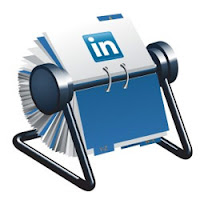If you are a truly successful sales person then you can’t
have ignored the latest trends in sales and marketing in the B2B arena when prospecting
– LinkedIn. However, do you know that you may be allowing your competition to
know exactly what you are doing and who all of your customers are?
Now there’s a scary thought!
Information on customers is highly valuable to the salesman.
In fact I have seen many salesmen hiding much of the information from their own
company as a way of protecting their job security. Its one of the reasons that
there is so much push back on implementation of CRM systems such as
Salesforce.com or ACT!
So where is the backdoor to this mine of data?
First, let’s look at LinkedIn briefly and some basic human
characteristics when networking on this social media tool for business. Here
are some assumptions:
- The majority of people when sent an invitation to connect will do so.
- The number of connections someone has on their profile is often seen as a measure of how successful they are (wrong).
- When a salesman visits a customer he often connects with them via LinkedIN directly afterwards.
- Most people leave their connections wide open to viewing by another connection
- Verticals are incestuous and it’s not uncommon to have competitors in your past connections
So, with all this said, it is not difficult for a savvy
competitor who is a 1st degree connection with you to go through all
of your connections trolling for companies of interest. All they have to do is
click on the “connections” link in your profile and hey presto, a goldmine –
every one of your contacts available to see. And LinkedIn makes it easier by
allowing them to search within your connection to make the process even smoother.
About now you should be worried.
So what do you do?
Option 1 – The
Gatekeeper
You can go through all of your connections looking for
competitors and then remove them one by one (go to “Connections” and then
“Remove Connections” and choose who to get rid of. They will be informed that
you have done this, by the way).
A little intensive and takes some time with always the worry
that you will miss someone. Plus, let’s be mercenary about this, connections to
other sales contacts can also serve as a life blood to future career options so
you shouldn’t burn your bridges whenever possible. Plus competitive reps can be very creative
about finding avenues to become one of your connections if they are suitably
motivated.
Option 2: Lock Down
The best way and the simplest - just shut down the ability
for anyone to see who your connections are. With a closed network your
connections can see your entire profile, but cannot see your full list of
connections. The one exception is that your
connections can see connections that you share together.
So go to “Settings” on your LinkedIn account and under
Privacy Controls, select the text link titled
‘Select who can see your connections’. Toggle the drop down from ‘Your
Connections’ to ‘Only You’.
In addition (and don’t forget this), ‘Activity Broadcasts’
provide auto-updates from your account.
Take time reviewing the privacy controls and consider your options. Lock
this down also.
Ok, take a moment and breathe a sigh of relief. You are now
safe from prying eyes.
And then take the next step…
“If someone can do
this to me, why can’t I do this to them?”
One of the hardest parts of selling is getting to the right
person. Who are they, What is their job title, What do they really do? It can
be a huge time waster. If your competition has already done this, then why not
stand on their shoulders.
Look through your connections and see if you can find a
competitive salesman. If not, try and connect with them. Try three or four
within a company; at least one, if not more, will accept. Then click on their
connections and off you go.
The joy of LinkedIn is that there is no audit trail of what
you are doing once you have made the connection and closed off your Activity
Broadcast. So nobody will even know.
Is any of this wrong or illegal? Not in the slightest. If
your competition broadcast this information then why not use it. Just make sure
they can’t do it to you first.
LinkedIn is a wonderful tool for prospecting but to use it effectively you have to know the advantages and disadvantages and how to use both to further your sales goals.
Good hunting.



No comments:
Post a Comment